Hope flies in to cyclone-hit Myanmar
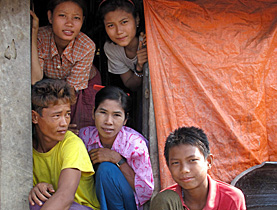
Birds – and hope – are slowly returning to southwestern Myanmar, one year after it was devastated by Cyclone Nargis, Caroline Morel from Swissaid tells swissinfo.
The executive director of the non-governmental organisation, which was one of the first to help out after Nargis struck, has just returned from a visit to the affected region.
Cyclone Nargis hit the Irrawaddy Delta on May 2, 2008. More than 140,000 people died and more than a million were made homeless, making it one of the most devastating cyclones ever to hit Asia.
Very strong winds had caused a three-metre high tidal wave, which flooded vast areas of the region.
People took refuge in trees as the water level rose, but the changing wind direction caused many to fall to their deaths.
Foreign aid workers were at first prevented from entering the region by Myanmar’s military junta government. Under international pressure, it relented three weeks later.
swissinfo: You have just come back from southern Myanmar. What is the situation there?
Caroline Morel: I was rather impressed. You still see a lot of the effects of Cyclone Nargis, but there is already some recovery. People have something to live in, but many houses are still not finished or in as good a state as they were before. Talking to the people, it’s very painful and heartbreaking to hear all their stories because a lot of them lost loved ones.
A big problem now is the rice yield. Last year it was really bad, only 30-50 per cent of what is normal, due to the salted soil, so people have a lot of economic problems as well. It’s the rice growing area of Myanmar and farmers hope that within the next three years the soil will have recovered.
swissinfo: What have been Swissaid’s priorities in the region?
C.M.: At first, it was emergency aid, bringing food and drinking water to the people. Afterwards we started reconstruction projects and helping people with income-generating activities. We distributed seeds, hand tractors – because the animals had died – and fishing nets and boats.
Houses are still the priority because soon the monsoon will start and people will need somewhere to live. In the next two to three years we will withdraw from the area because we normally mainly work in the northern part of the country.
swissinfo: What would you say is the mood now among people? Are they beginning to feel more optimistic about the future, despite their terrible losses?
C.M.: I was really impressed with the sense of solidarity. At first, people had two to three weeks without any help from outside, so they had to help themselves. This solidarity continues in the villages where people support and help each other. They continue their activities and look to the future.
Somebody told us that all the birds left the region after Nargis, but recently birds have started coming back, so it’s a sign for the future.
swissinfo: At the beginning the Myanmar government refused to let foreign aid workers into the region, but later softened its position. How is cooperation for NGOs now?
C.M.: It’s much easier now. They still have to negotiate, but we observe more of a slight openness from government.
It was good that there was pressure last year from the United Nations and Asian countries, which made the government change its policy and open up the country to foreign aid. There are now more international organisations in the country.
swissinfo: How would you describe the outlook for the affected region?
C.M.: I think it will recover, although of course, there are the human losses and many difficulties.
It’s important to observe climate change in the future because this region is very low-lying and it may be very affected by another Nargis.
swissinfo: What can be done to prepare it for another Nargis?
C.M.: We saw that some buildings, like schools, are being built on hills, so there is some shelter and people are able to take refuge if there is another disaster.
We are looking for salt-resistant seeds because the soil might change and the climate could affect agricultural production.
swissinfo-interview: Isobel Leybold-Johnson
Swissaid is involved in development projects in nine countries. It has been in Myanmar since 1992.
The NGO works with local partners in the field. This meant that it could react quickly after Nargis struck, as these partners knew the area. It distributed rice, clothes, clean water and plastic sheeting for temporary shelter the survivors. It is now involved in reconstruction.
In all, SFr300,000 ($263,000), which included funding from Swiss Solidarity, was spent on emergency aid. SFr400,000 is earmarked for reconstruction. 65,000 people have received support.
Myanmar, formerly Burma, has been under military rule since 1962. It suppresses all dissent and is subject to international sanctions.
Nobel peace laureate and opposition leader Aung San Suu Kyi has been under house arrest for 11 of the past 17 years. International Committee of the Red Cross staff have not visited her since September 2003.
On April 27 the European Union extended sanctions and called for the release of political prisoners, including Aung San Suu Kyi.
There are general elections planned for next year in Myanmar, but EU diplomats say the country has not yet taken the steps needed to make them credible and inclusive.
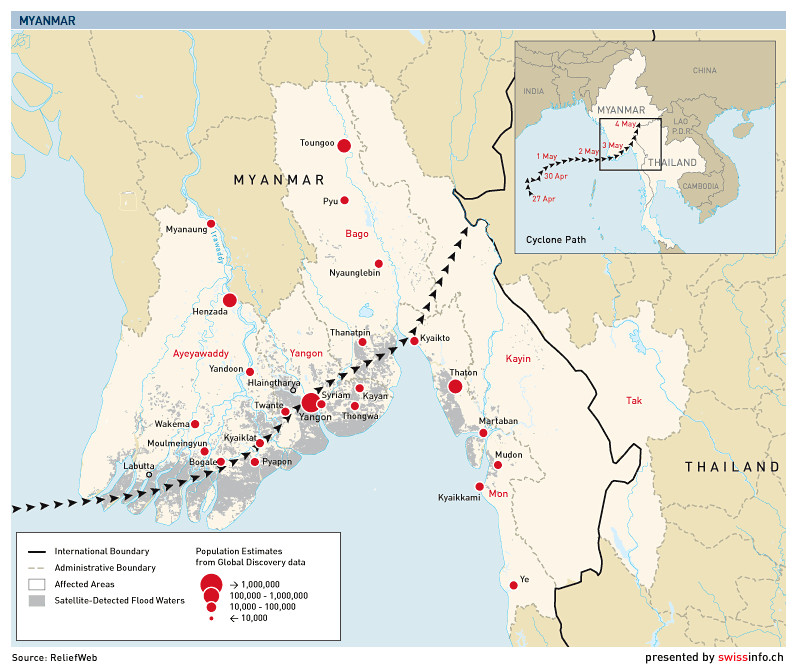

In compliance with the JTI standards
More: SWI swissinfo.ch certified by the Journalism Trust Initiative

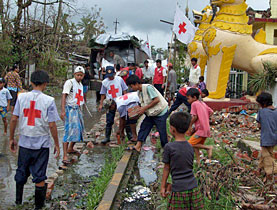
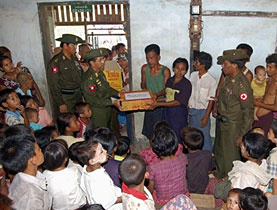
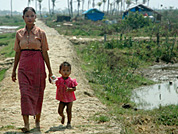
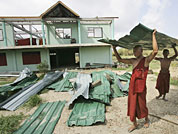
You can find an overview of ongoing debates with our journalists here. Please join us!
If you want to start a conversation about a topic raised in this article or want to report factual errors, email us at english@swissinfo.ch.